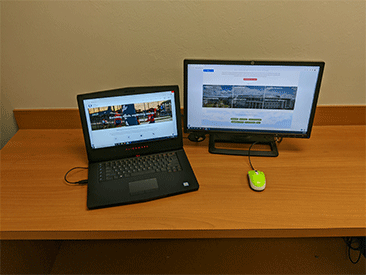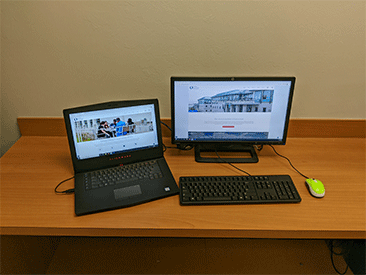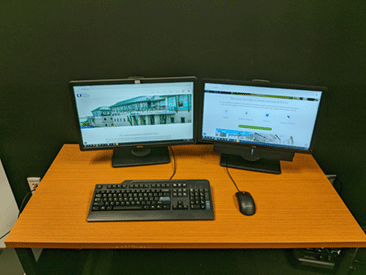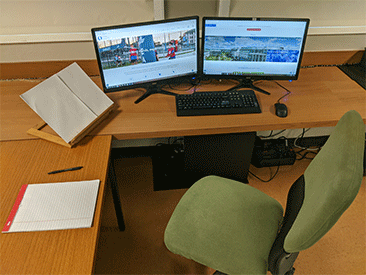Recommendation
- Processor: Intel i-Series (i5, i7, i9) or AMD Ryzen or equivalent (2019 and later)
- Memory: 32 GB RAM or higher
- Hard Drive: 512GB or higher (SSD required)
- Operating Systems: Windows 10 or MacOS with Parallels
- Not all software used in the programs are compatible with Mac computers or Chromebooks
- Webcam, Microphone, Speaker/Headphones
- Wireless Network Card: IEEE 802.11 b/g/n WLAN NIC, 2.4 GHz/5GHz Dual Band, WPA2-PSK/WPA2-Enterprise
Minimum Requirement
- Processor: Current generation Intel Core Series (i3, i5, i7, i9) or AMD Ryzen equivalent
- Memory: 8GB RAM
- Storage: 250GB hard drive/SSD
- Web cam, microphone, and speakers
- Wireless internet (WiFi)
- Windows 10 or Mac OS X (High Sierra or newer recommended)
- High speed Internet access at home (10mbps per device is a good rule of thumb)
Workspace Setup Examples
Pictured below are four different workspace setups that are recommended for students. A second screen improves your time efficiency by up to 30% across all tasks. Using a mouse instead of a laptop trackpad increases the speed on certain tasks up to 50% faster and learning keyboard shortcuts for various application (e.g. Excel, programming IDE) can improve your efficiency up to 200% faster.
Example 1

Laptop, Second Screen, Mouse
Example 2

Laptop, Second Screen, Keyboard, Mouse


